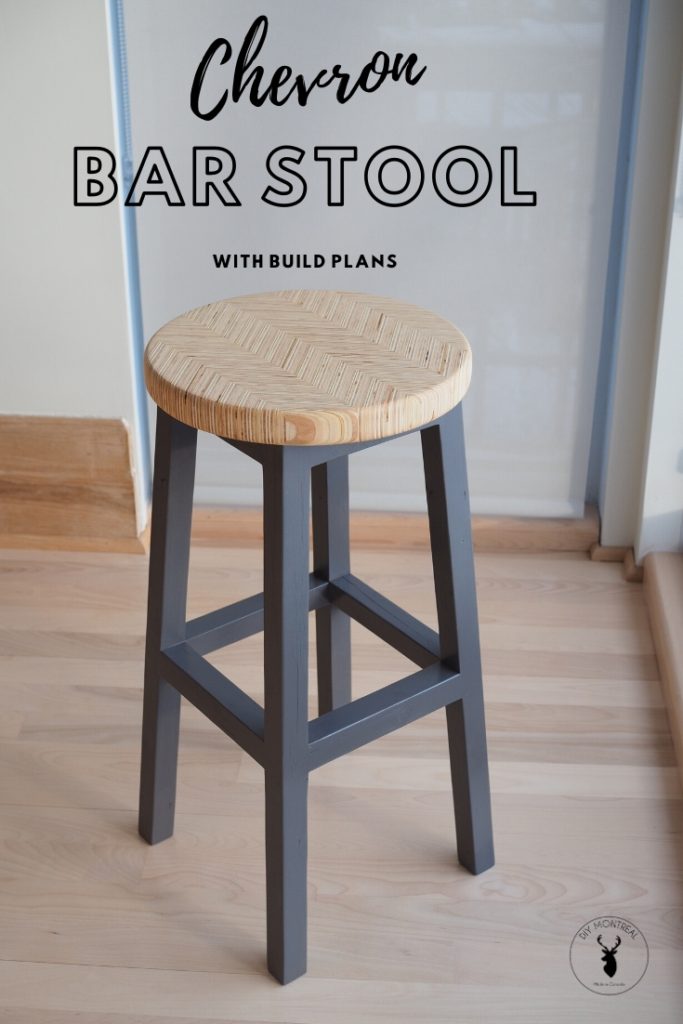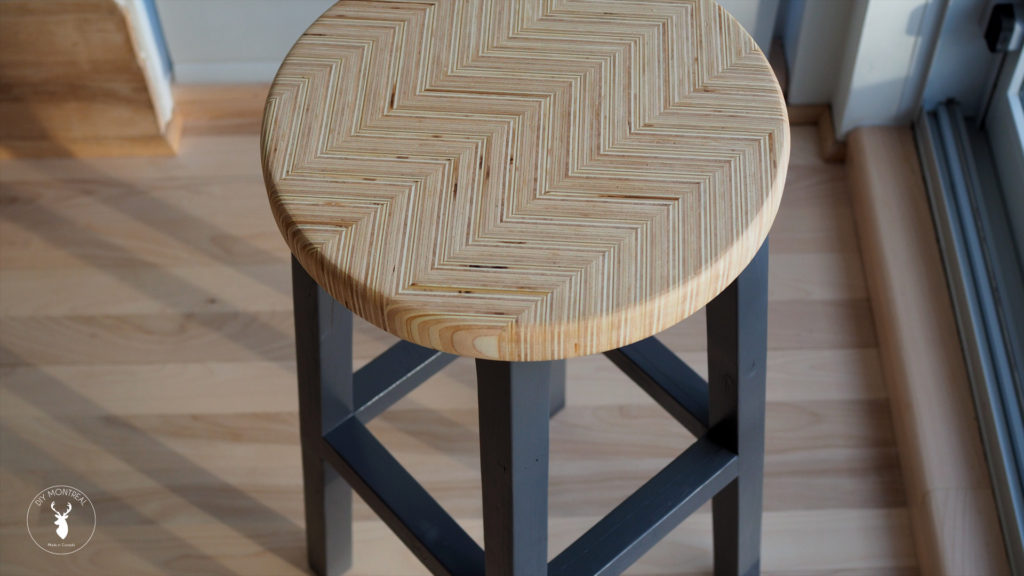
There are some really cool things you can do with plywood like creating visual patterns. I thought this could give a really cool look to an otherwise plain looking bar stool, so I decided to try out a chevron pattern for the seat.
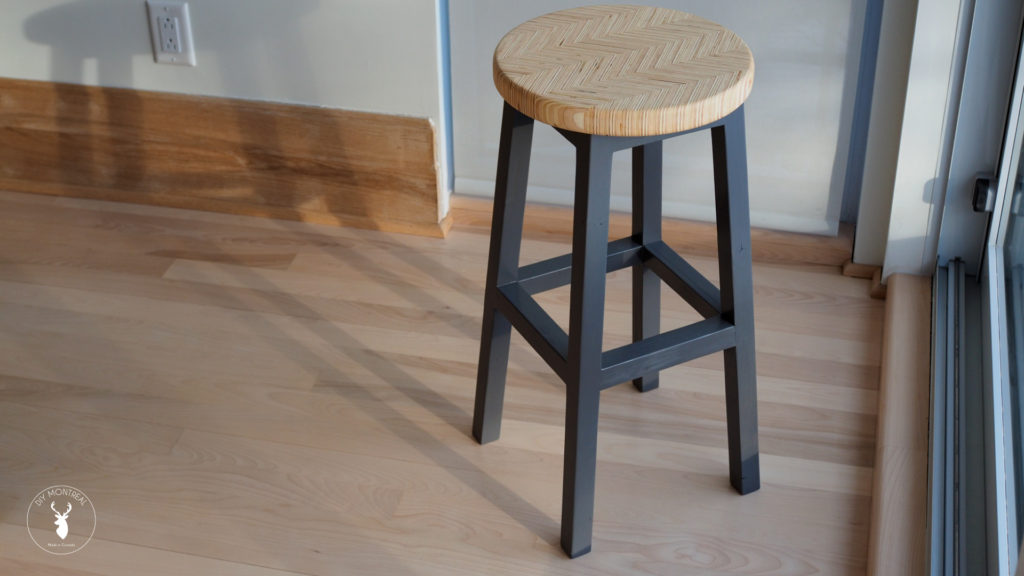
In today’s build, I’ll also show you how to use compound angles to make the base with outward leaning legs.
Tools & Materials
Materials used
- Quarter sheet of 3/4 Premium plywood
- Pine 2×4 stud
- Denatured alcohol https://amzn.to/2riCndc
- Osmo Polyx-oil https://amzn.to/37puN1b
- Grey spray paint https://amzn.to/3cm29R4
- Titebond II glue https://amzn.to/2RRXSOD
- 3/8 dowel pins https://amzn.to/2TaYWuZ
Tools used
- Stationary power tools
- Dewalt Planer https://amzn.to/2qE7HmM
- SawStop Table Saw https://amzn.to/2EwgGHI
- Miter saw https://amzn.to/2RLQz6N
- Handheld power tools
- Track saw https://amzn.to/2wHJ4Zn
- Router https://amzn.to/2um2Qsm
- Trim router https://amzn.to/2DuhVv6
- Orbital sander https://amzn.to/2uWooLF
- Accessories
- Roundover bit https://amzn.to/2MDcYBG
- UpSpiral bit https://amzn.to/2TgyeQo
- Digital angle gauge https://amzn.to/2ONi7Zf
- Grr-ripper https://amzn.to/2D4czo5
- Dowel jig https://amzn.to/2PHQByz
- Bessey parallel clamps https://amzn.to/2XE3Pyo
- Kreg face clamp https://amzn.to/2JEj58r
- 12 inch square https://amzn.to/2SPTeiT
Get the Plans
If you’re interested in getting all the details on the dimensions, plans are available for this build. You’ll find a link to the plans below (click on the image).
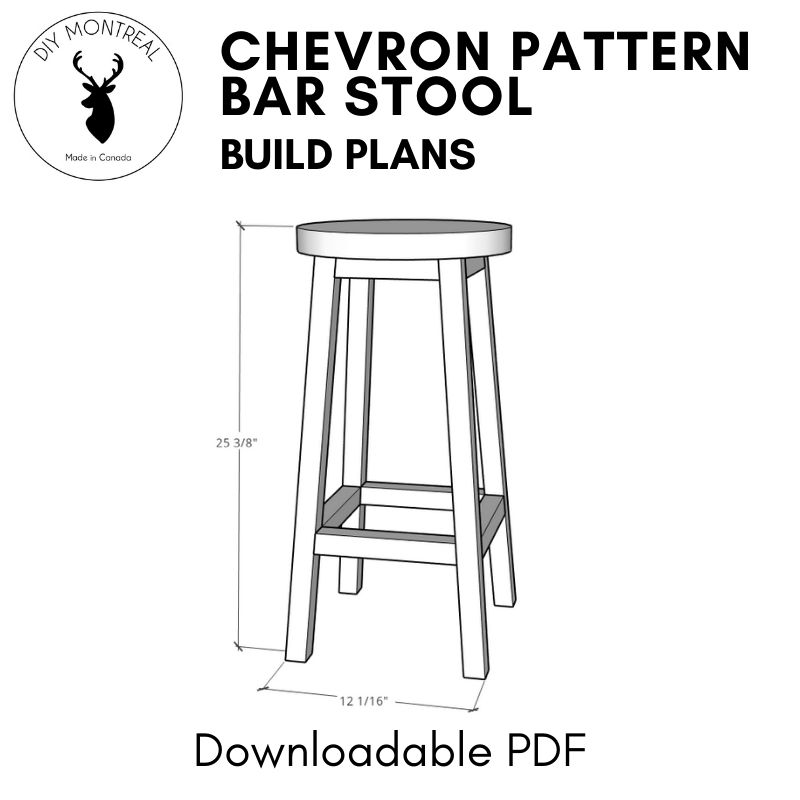
Chevron Pattern Stool Seat
To create the chevron pattern I’m using 3/4-inch plywood that I’ll rip into a bunch of strips and glue up on edge. To get a nice clean look it’s key to use premium plywood (with a smooth face), like Baltic birch or a sanded plywood.
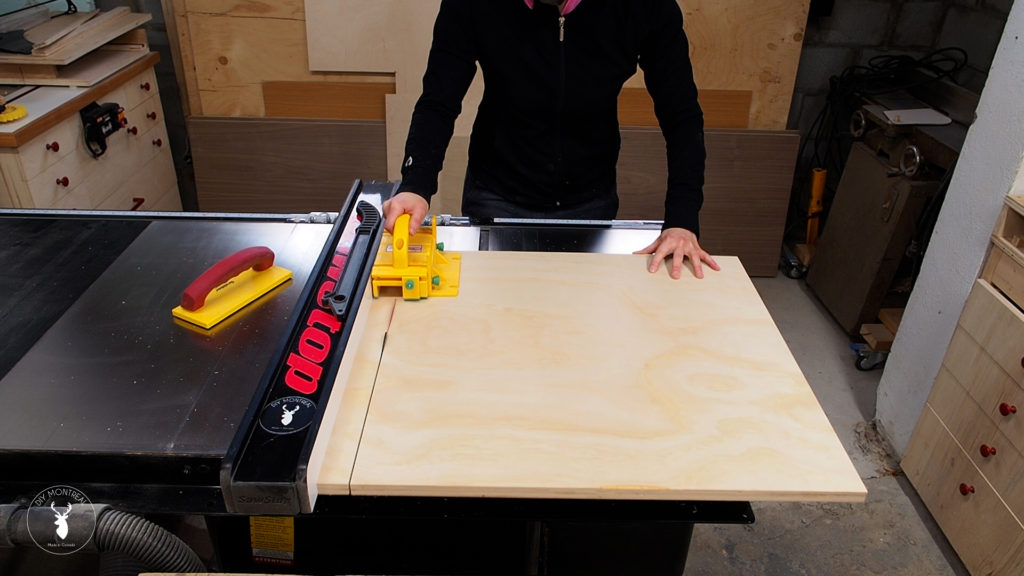
I used a large speed square and drew a line at 45 degrees to have a reference line for alignment as I glued together all the strips.
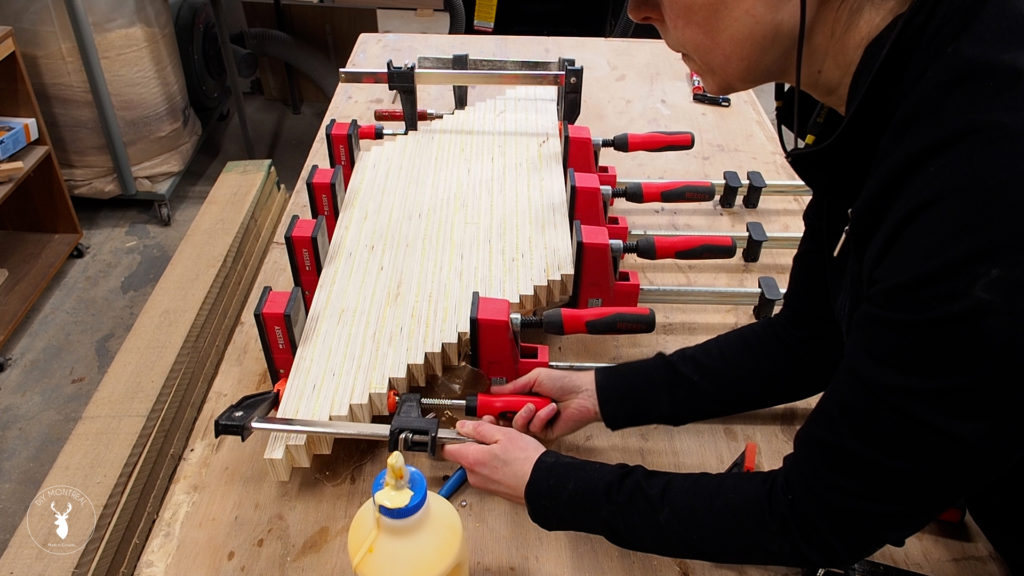
I threw on some clamps and let it dry overnight. Once it was dry, I used a chisel to clean off as much dried glue as possible, then ran the blank through the planer, taking extremely shallow passes (since running plywood end grain through the planer is really hard on it). I flipped the board over and lowered the blades ever-so-slightly as I went, until it was smooth on both sides.
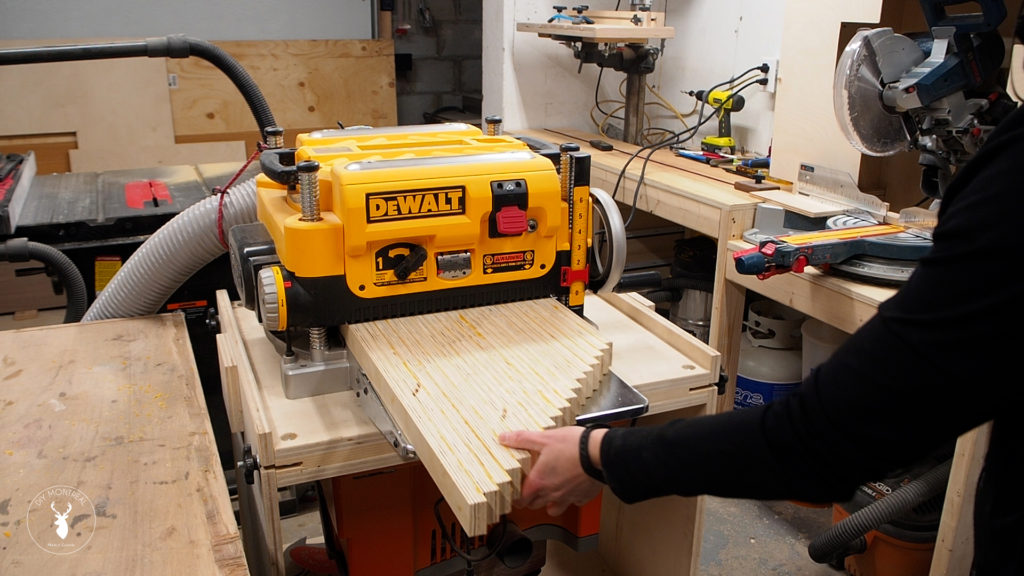
To create the chevron pattern, I need to cut this blank up into strips at a 45 degree angle. I used a large speed square to make a reference line and used my track saw to make the first cut.
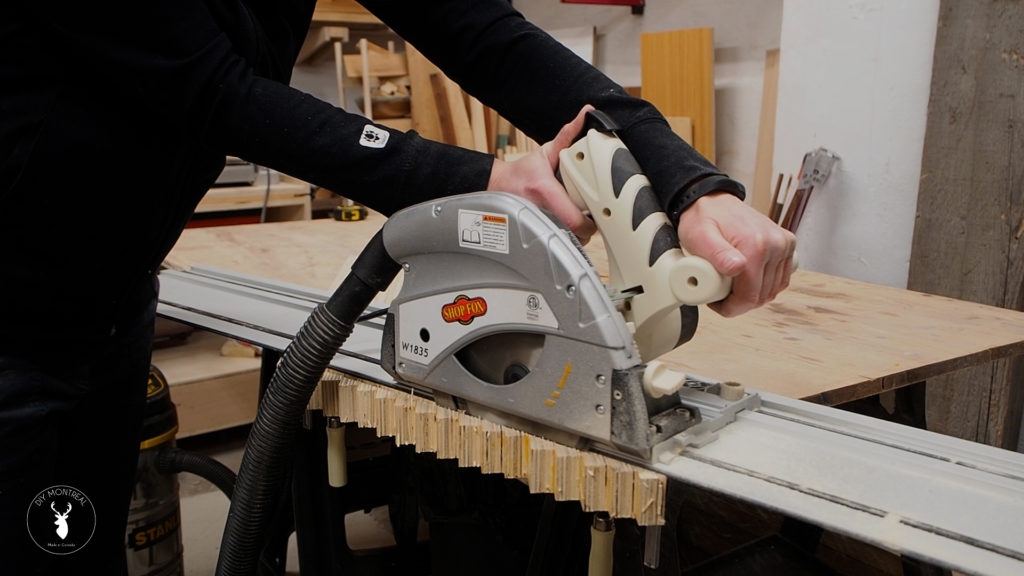
With that first edge cut, I could now go back to the table saw to rip the blank into strips on a 45 degree angle. Take it slow here and make sure to keep all the pieces in order otherwise your pattern will get messed up later.
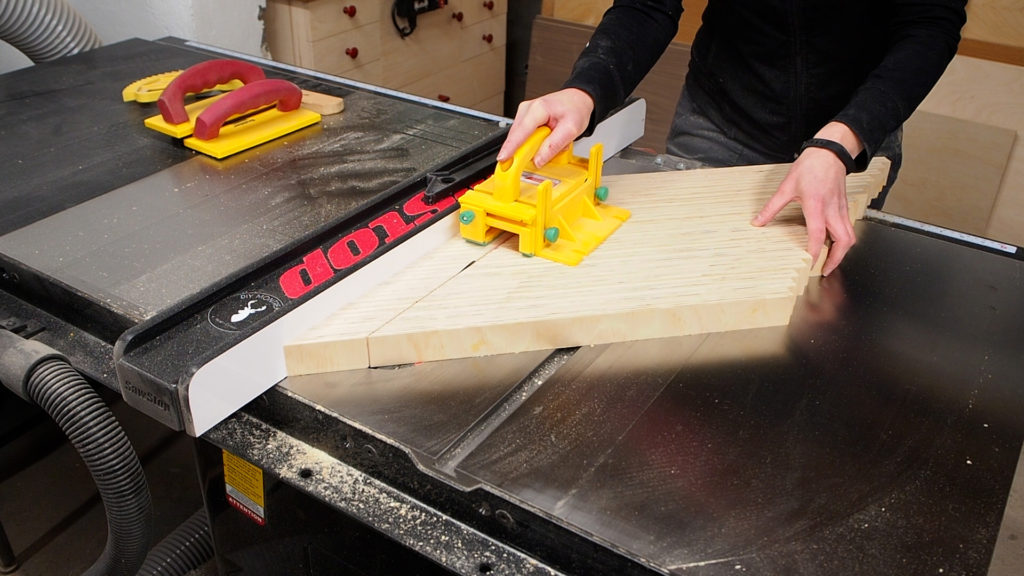
With all the strips cut, I could flip over every other piece in order to create the chevron pattern, and glued all six pieces together.
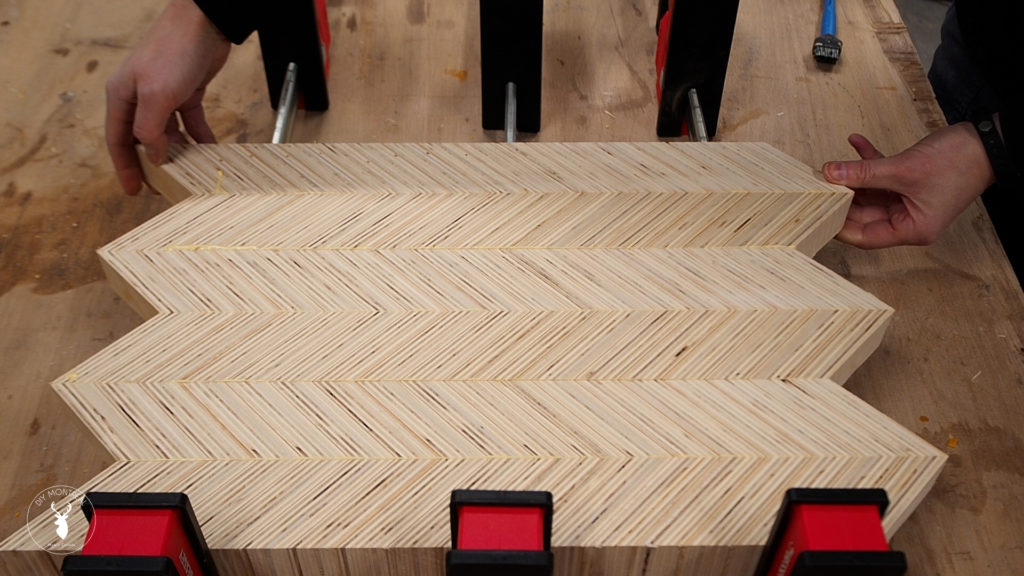
After planing down the blank, it’s time to shape it into a circle for the seat. For this, I’m going to use my homemade router circle cutting jig. I already have it all set up here, but if you want to learn more about it you can check out my lazy Susan video here.
To cut the circle I used an up-spiral bit using shallow passes in a clockwise direction. After each revolution I lowered the bit ever so slightly and went around again, and repeated this several times. Every once in a while it helps to clear out the excess sawdust with a shop vac. After multiple revolutions, I finally made it all the way through and a circle was born.
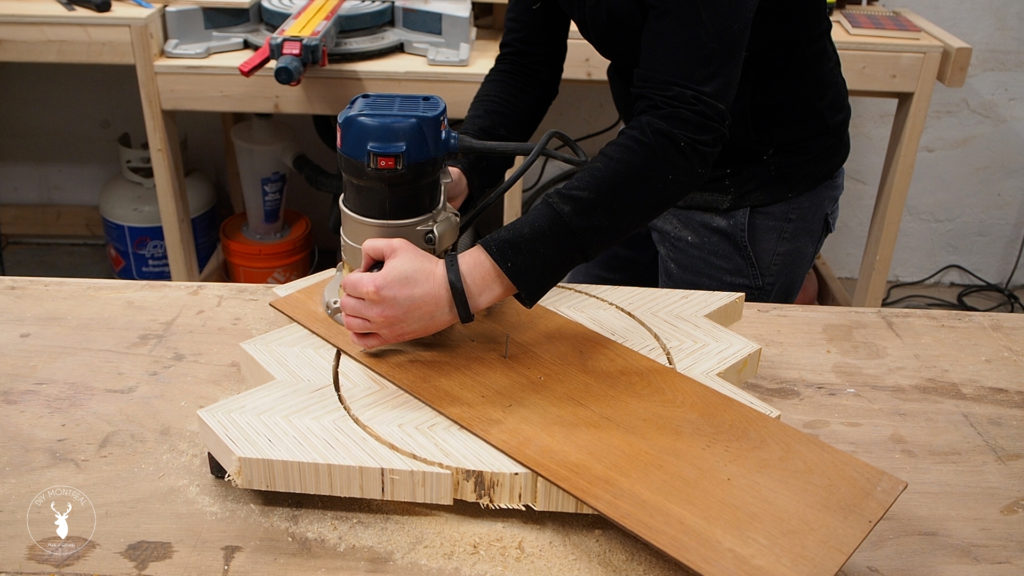
Despite using premium plywood I noticed some voids within the plys, so I’m just going to use a little glue and some sawdust to fill those in, and then hit it with the sander.
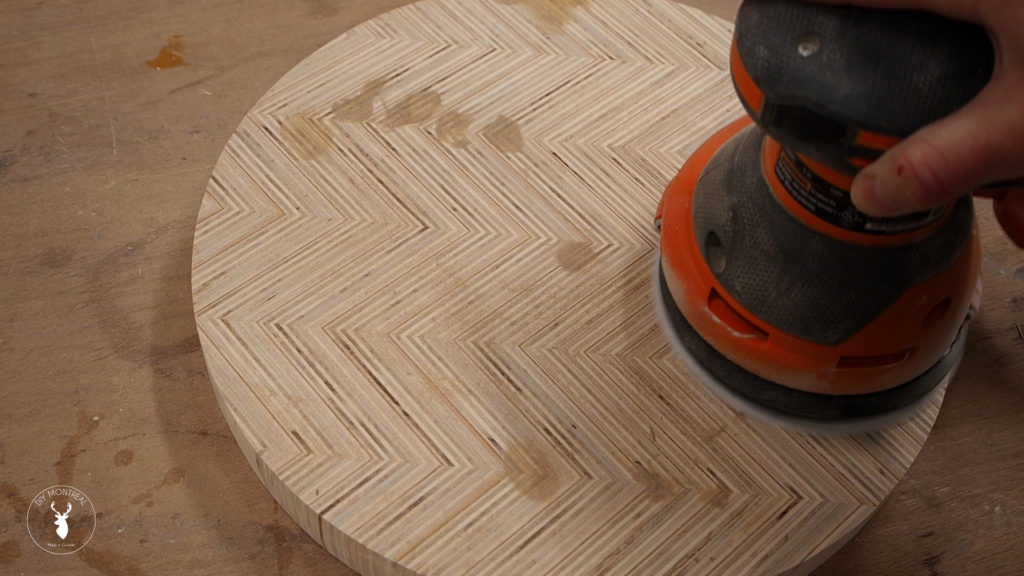
Next I used my trim router with a round over bit to round over the edges. To avoid leaving burn marks, especially with plywood, it’s best to do this in multiple passes, lowering the bit slightly on every pass until you’re happy with the look. Remember to go counter-clockwise with the router.
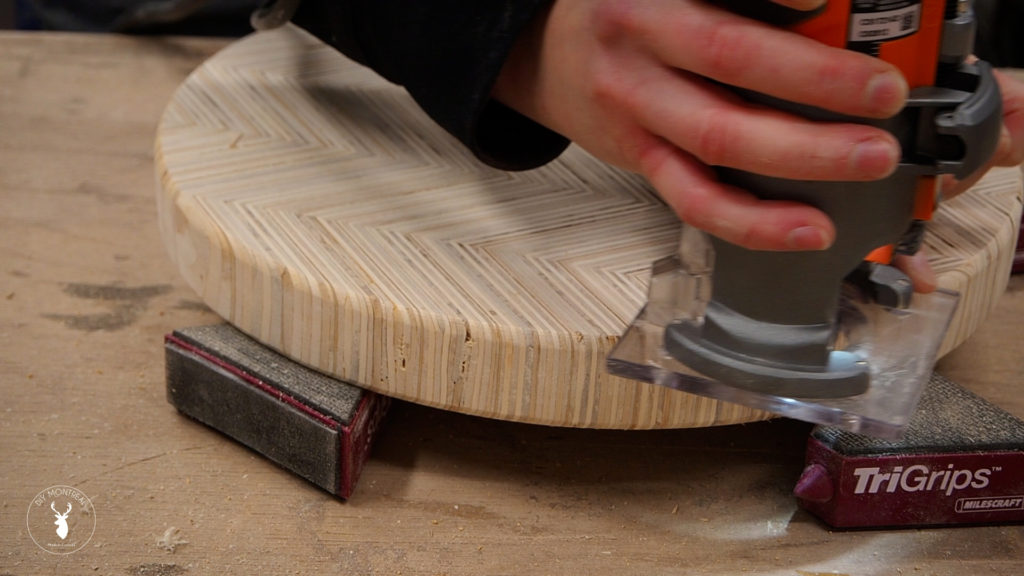
Then of course comes the obligatory sanding, making sure to hit all the edges as well as the top, starting with 80-grit and making my way up to 220-grit. You can get plywood end grain really smooth if you take your time and do this right.
As a finish, I’m using Osmo Polyx-oil, a hardwax-oil mix. I really love the rich and smooth look it provides, and it’s becoming my go-to finish for a lot of projects.
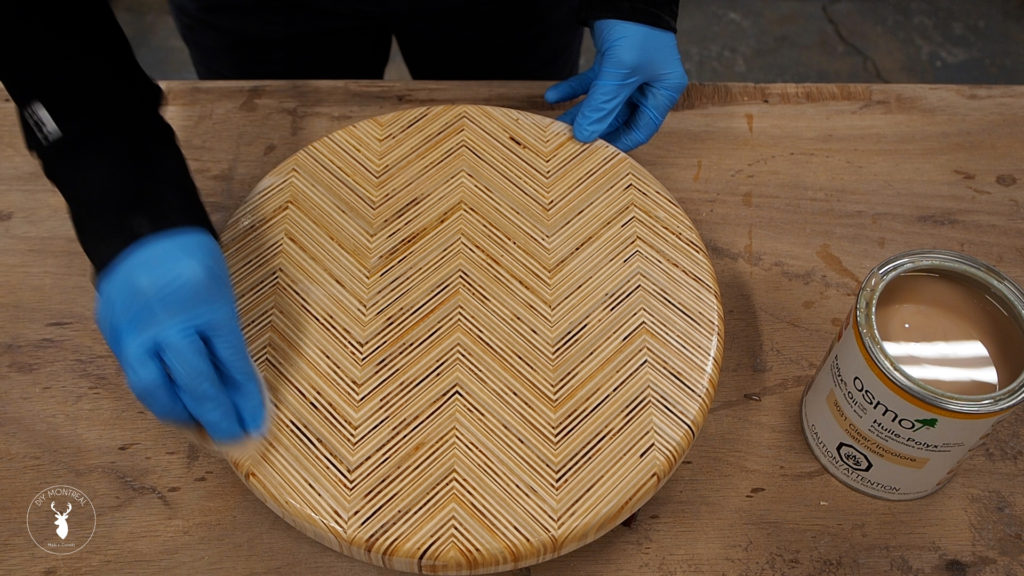
Bar Stool Base
While that dries, I’ll get started on the stool base. I’m going to use a single 2 by 4 for the legs and the rungs that I’ll cut into 3 sections. Two of these will be used for the legs, and I’ll start by trimming off one edge on both of these boards to square up the edges, then rip them into four 1-1/4″ square strips.
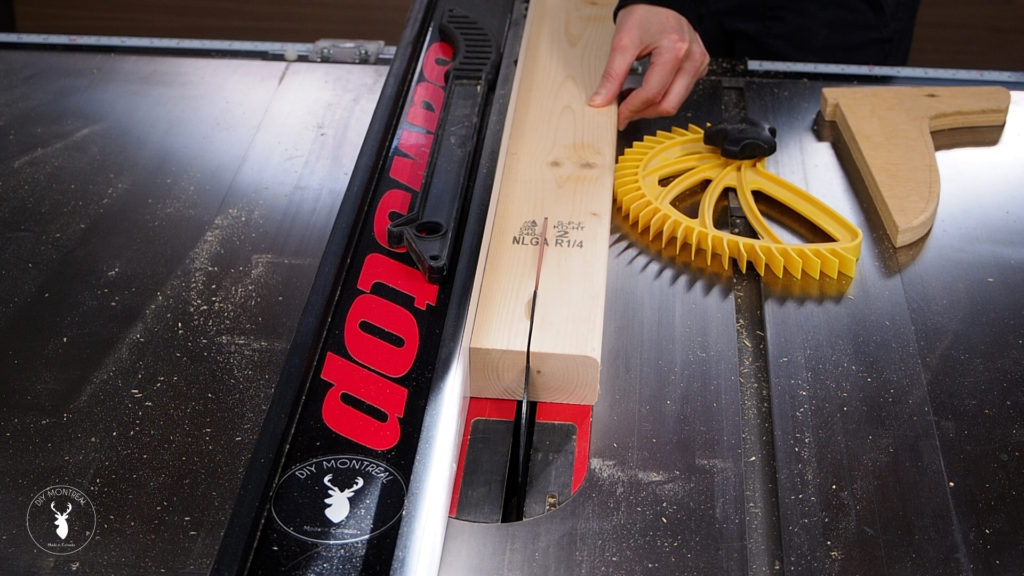
Shown below is a prototype I made that I want to show you so you’ll get an idea of where I’m going with this. As you can see the legs are slopped outwards on all four sides which, I learned, is referred to as raked and splayed legs. To achieve this style, all the parts will need to be cut using compound angles, one way for the legs and a different way for the rungs, and I’ll show you how in the next few steps.
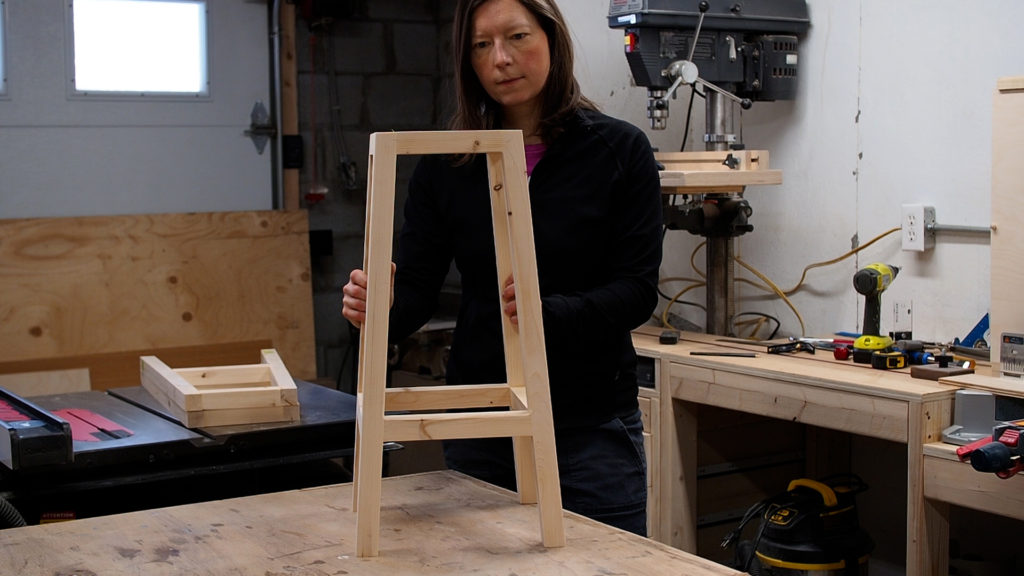
For the legs, both the bottom and top need to have a parallel compound angle. I started by tilting my miter saw blade by 5 degrees (5° bevel) and swinging the blade to the right by 5 degrees (5° miter) as well.
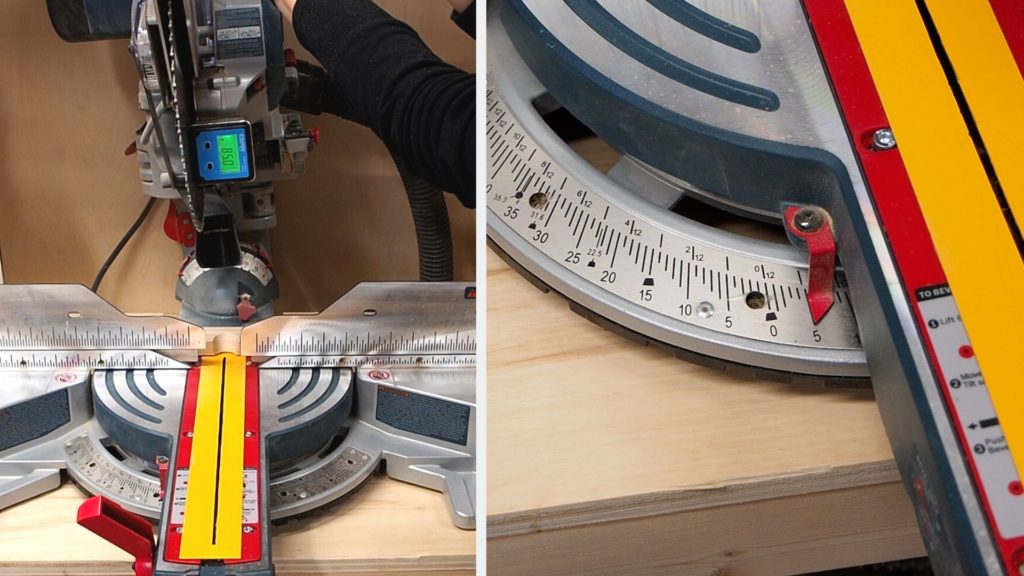
With these settings locked in, I trimmed off one end of all 4 legs. I then set a stop block to ensure consistency, and cut all the legs to length.
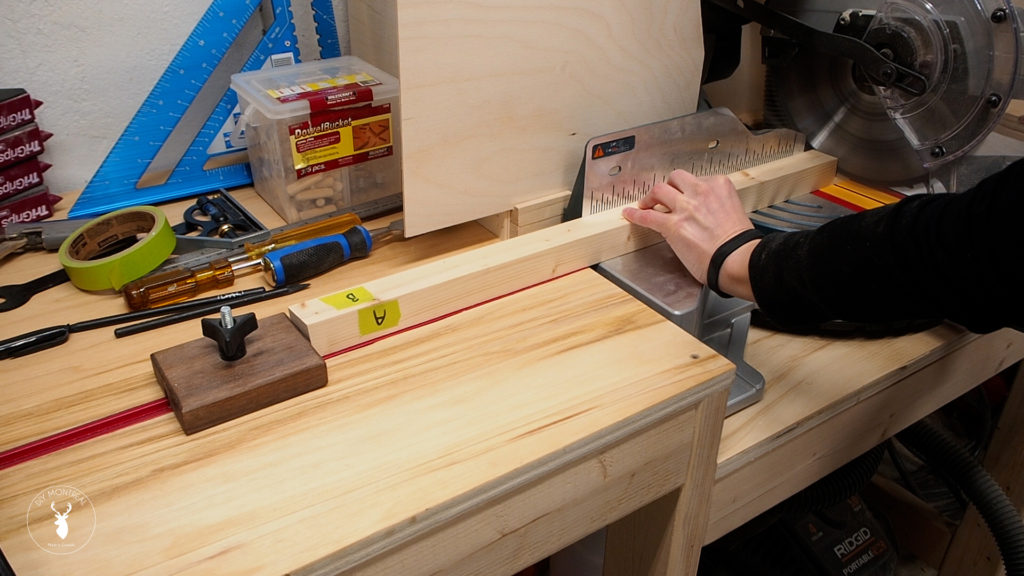
I still have one piece of 2 by 4 left over and this will be for the rungs. I’ll first start by planning it down to 1-1/4 inches to match the thickness of the legs. The compound angle on the rungs is a little different than the legs. I started by tilting my table saw blade by 5 degrees.
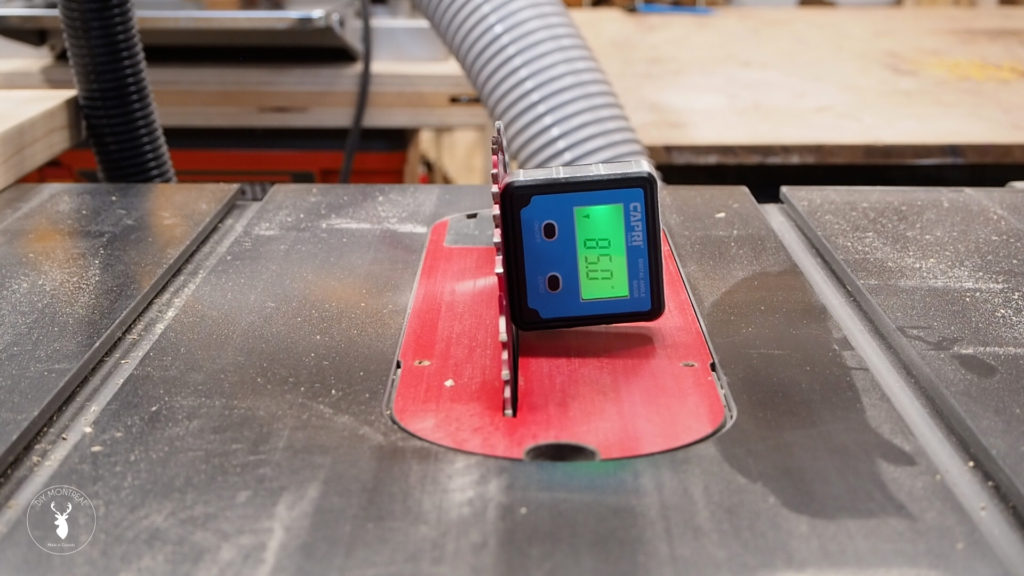
I then ripped some strips 1-¼ inches wide, making sure to keep the angles parallel to each other to end up with 2 parallelograms when all is said and done.
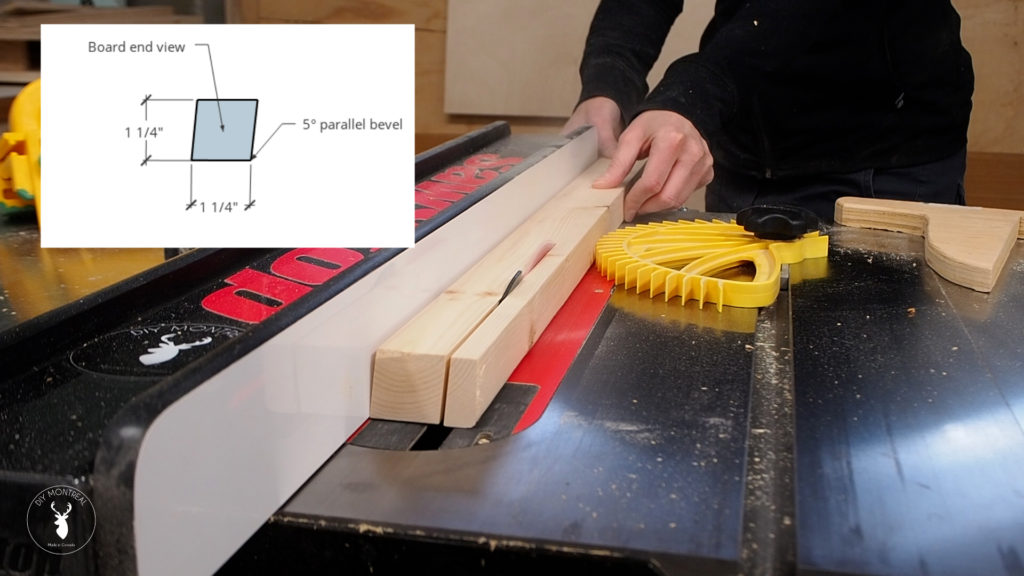
To cut the rungs to size, I swung the miter back to zero without touching the 5 degree bevel I previously set. I trimmed off one end of the board the flipped the board around to trim the other end, making sure to always keep the same side facing upwards, in order to end up with trapeze shaped rungs.
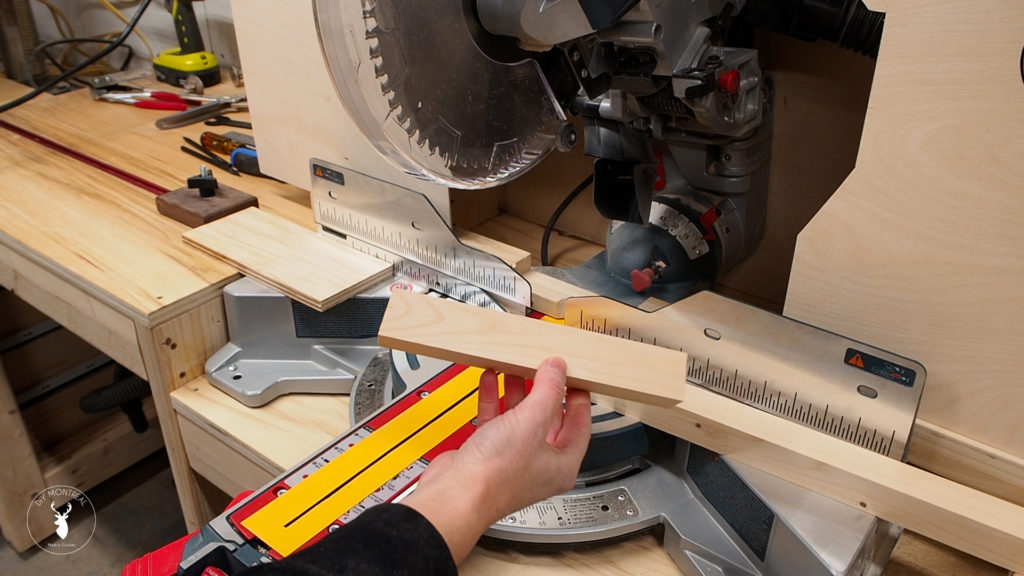
Assembling the Stool
With all the pieces cut I can start working on assembling the base. I’ll assemble one side at a time into an A-frame. Grabbing 2 legs, I simply rotate one of them 90 degrees to mirror the angles, and positioned a top and bottom rung. To figure out where the bottom rung will go, I kind of played around with it until the angles seemed to line up just right, and then used a combination square with that measurement to make sure both sides were at the same height.
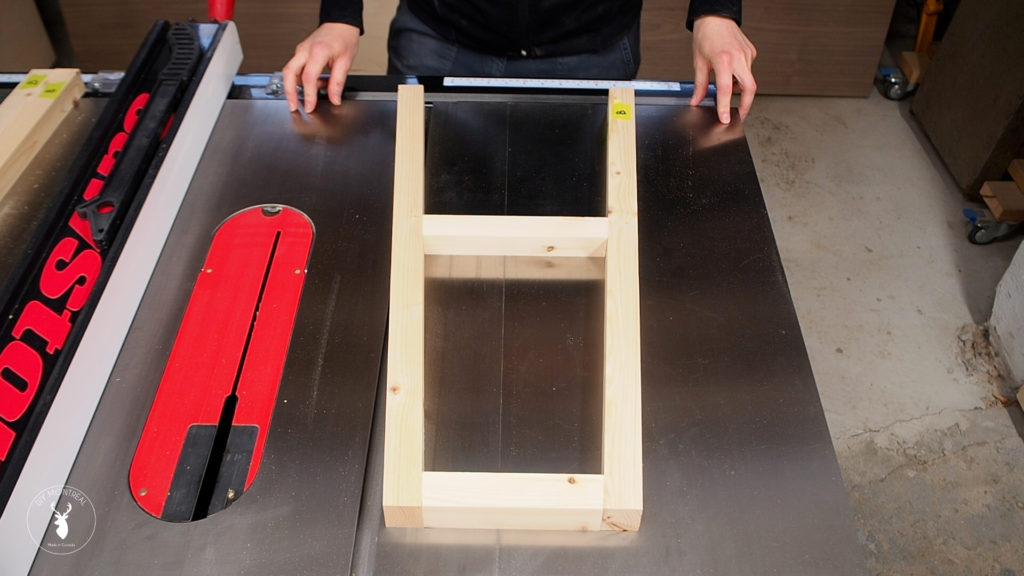
I’m going to use dowels to assemble the base and it’s easy to get mixed up here so I labelled all the adjoining parts. I’ll then drew a line across all the joints, perpendicular to the joint, and used my doweling jig to make all the holes where I marked them.
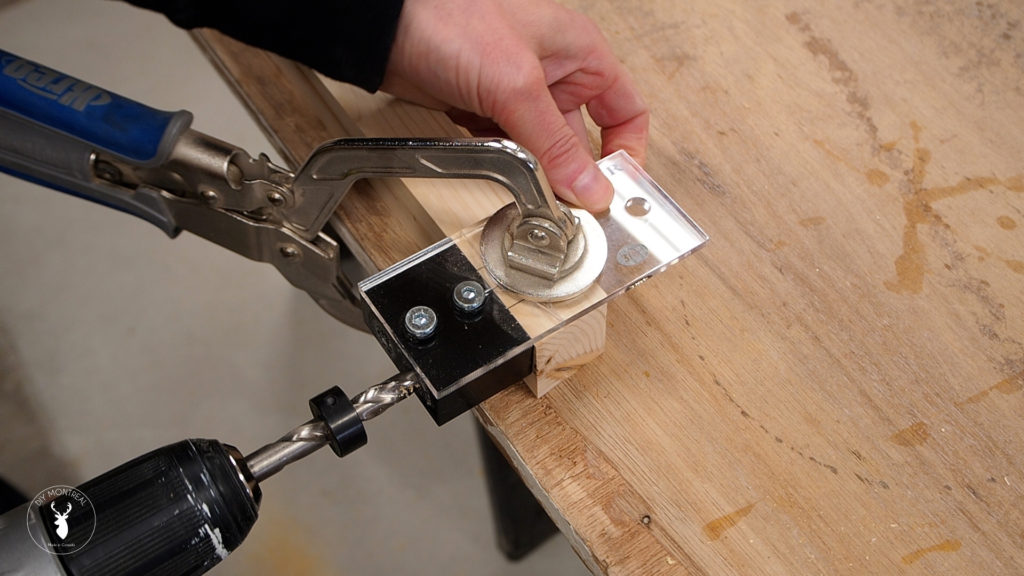
I applied a generous amount of glue in all the holes, as well as on the end grain to use up all the gluing surfaces I could. I assembled 2 sides into A-frames, let them dry, then came back to complete the assembly.
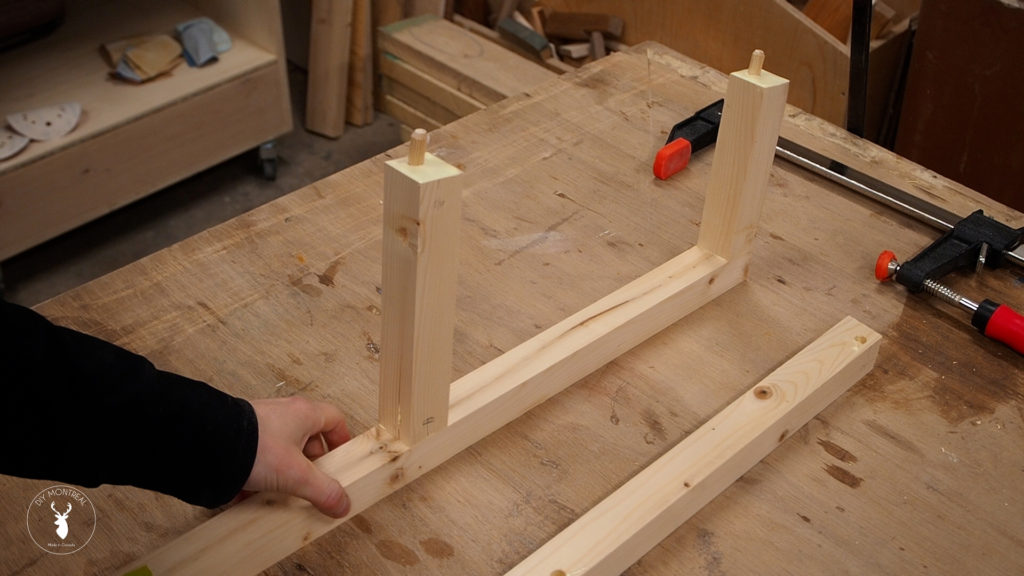
I used a trim router to break the edges and round over the outside of each leg. I then sanded everything smooth and applied a few coats of gray spray paint to the base.
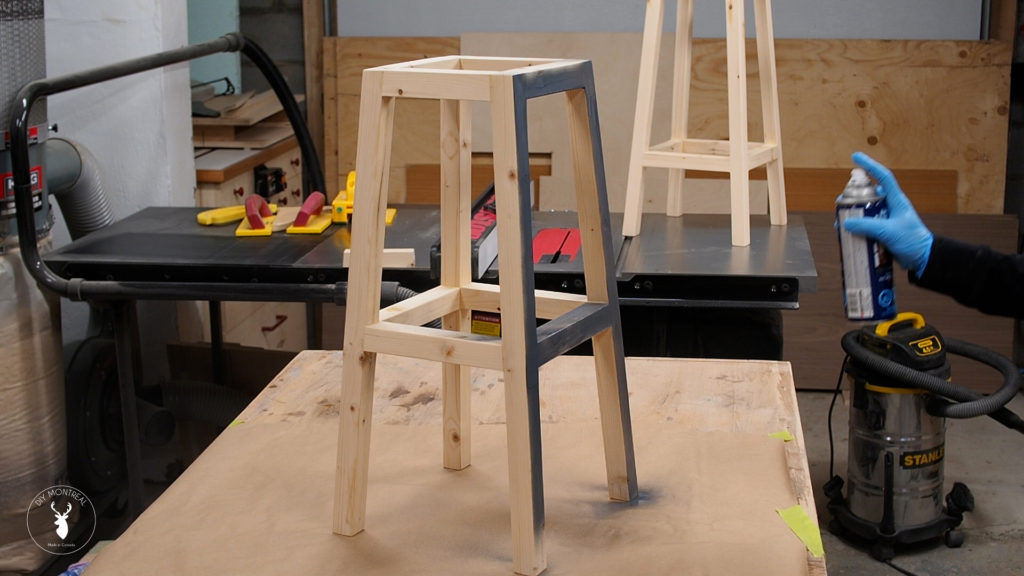
An easy way to center the square base within the circle seat is to measure the square and use half that measurement to mark on all 4 sides from the center of the circle. I placed a piece of tape on those markings and used them as a guide to position the base, then attached the base with 4 screws.
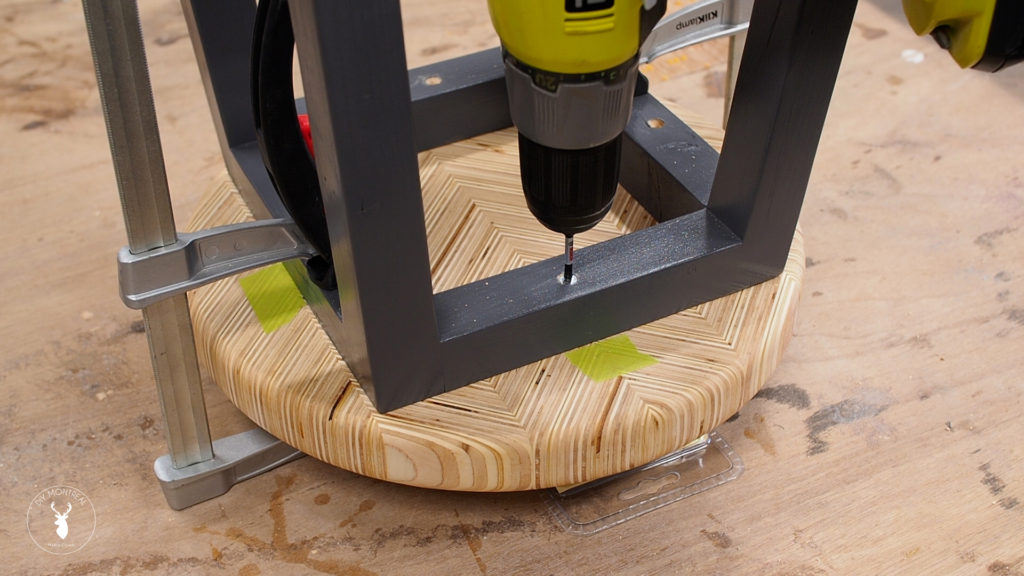
Hope you enjoyed this build! If you haven’t already, be sure to watch the video for more details and, if you like what you see, subscribe to my YouTube channel! And remember, detailed plans are available for purchase here.
